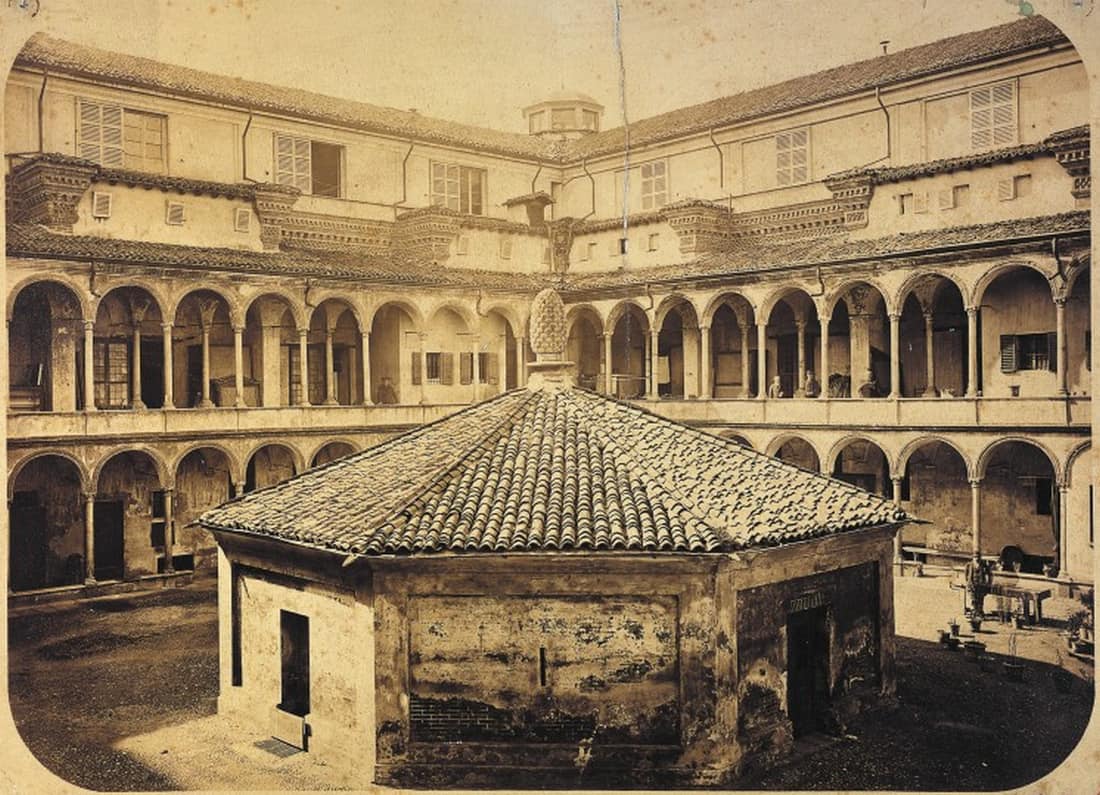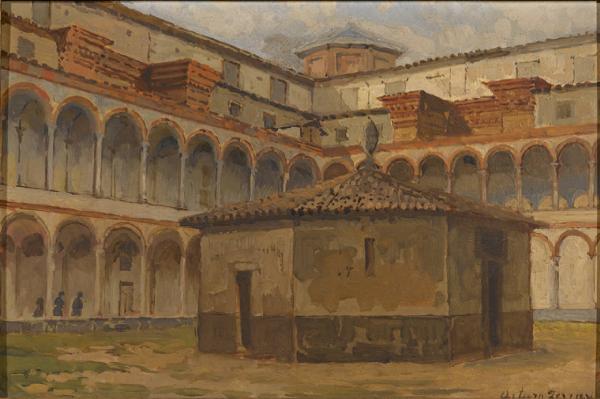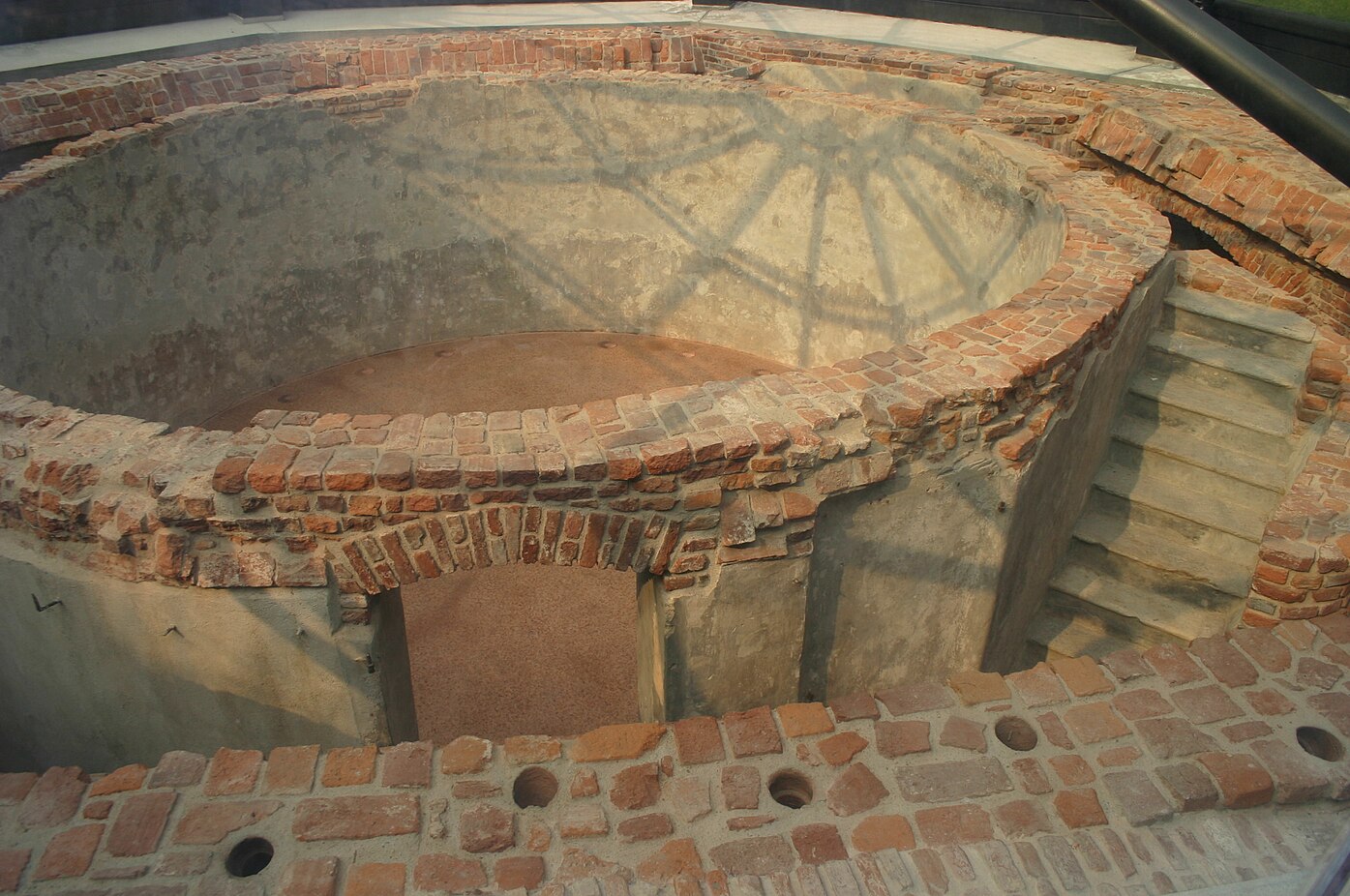About the Library
The origins of the Philosophy Library can be traced back to the late 1950s, following the completion of restoration work on the Ca’ Granda—the former Ospedale Maggiore of Milan, which now houses the University’s main headquarters. Severely damaged by bombing during the Second World War, the building underwent significant reconstruction, after which the Institutes of Philosophy and the History of Philosophy relocated from their temporary premises on Via della Passione to Via Festa del Perdono, in the wing adjacent to the Ghiacciaia Courtyard. Until that point, the philosophy books available at the University of Milan had been kept in the central faculty library. It was around this time that the first collection of several hundred volumes arrived, initially stored on the ground floor, next to the faculty offices.
In the 1960s, the first plans were drawn up to repurpose the basement beneath what is now the library, with the aim of relocating the collection to this lower level. Two professors were tasked with developing a functional system to both organise the books and meet the evolving research needs of the institutes. The project was entrusted to Professor Corrado Mangione, a lecturer in Logic, and Professor Maria Assunta Del Torre, a specialist in the History of Philosophical Historiography. Once the initial renovation of the institutes’ premises was completed, the books were moved downstairs. From that point onwards, the collection began to grow significantly, with many philosophy texts gradually being transferred from the central faculty library to the Institutes of Philosophy and the History of Philosophy at the request of academic staff.
In 1982, the establishment of the Department of Philosophy “Piero Martinetti,” which brought together the two existing institutes, further drove the library’s development, supported by the dedication of successive directors. Another key milestone came on 9 September 1999, when, by resolution of the Academic Senate, the Philosophy Library became an independent sector library and was integrated into the University’s Library System. As part of a subsequent reorganisation, it is now part of the University Library Service.
The Ghiacciaia
The library is housed in the ancient Ghiacciaia (Italian for “ice cellar”) of the Ospedale Maggiore in Milan, now home to the University’s humanities courses. The restoration and enhancement of this structure took place relatively recently, as part of a renovation project in the late 1990s. The Ghiacciaia Courtyard, like the adjacent Legnaia Courtyard, had been entirely overlooked in the post-war restoration, as it was considered a later addition to Filarete’s original architectural design.
The Ghiacciaia consisted of a cylindrical basin where snow was compacted in layers of straw, surrounded by an octagonal outer wall. The gap between these two structures contained a staircase, which is still visible today, allowing access along the entire height of the storage area. Until the 1940s, the ice cellar was covered by a small brick building with a sloping roof, topped with a decorative stone pinecone, which has since been relocated to the left-hand corner of the courtyard. The structure itself was destroyed during the Second World War bombings, but in its place, a striking glass canopy has been built, allowing visitors to admire the Ghiacciaia from outside.
The hospital’s proximity to the Cerchia dei Navigli—a system of canals that once encircled the historic centre of Milan—along what is now Via Francesco Sforza, proved highly advantageous. Archaeological excavations have uncovered an underground passageway connecting the Ghiacciaia to a series of subterranean chambers that linked directly to the Naviglio canal. These tunnels facilitated the transportation of snow and food supplies from the canal straight into the ice cellar, while the gentle slope of the access corridor enabled residual water to drain naturally back into the waterway.
For further insights into the Ca’ Granda, the former Ospedale Maggiore, and the Ghiacciaia, we recommend the following texts:
- G. Agosti, J. Stoppa, La Ca' Granda: da ospedale a università. Atlante storico-artistico, Milano, Officina libraria, 2017
- F. Vaglienti (a cura di), La Ca' Granda dei Milanesi. Itinerario interdisciplinare nel fulcro di una metropoli multiculturale, Milano, Università degli Studi, 2014
- G. Sena Chiesa (a cura di), Cellae in Hospitali exsistentes. Gli scavi nei cortili della Ca' Granda, Milano, Università degli Studi, 1998
- F. Chiappa (a cura di), Ca' Granda. Il ripristino dell'antica sede. 10 ottobre 1964, Milano, 1965
- L. Grassi, La Ca' Granda. Storia e restauro, Milano, Università degli Studi, 1958





